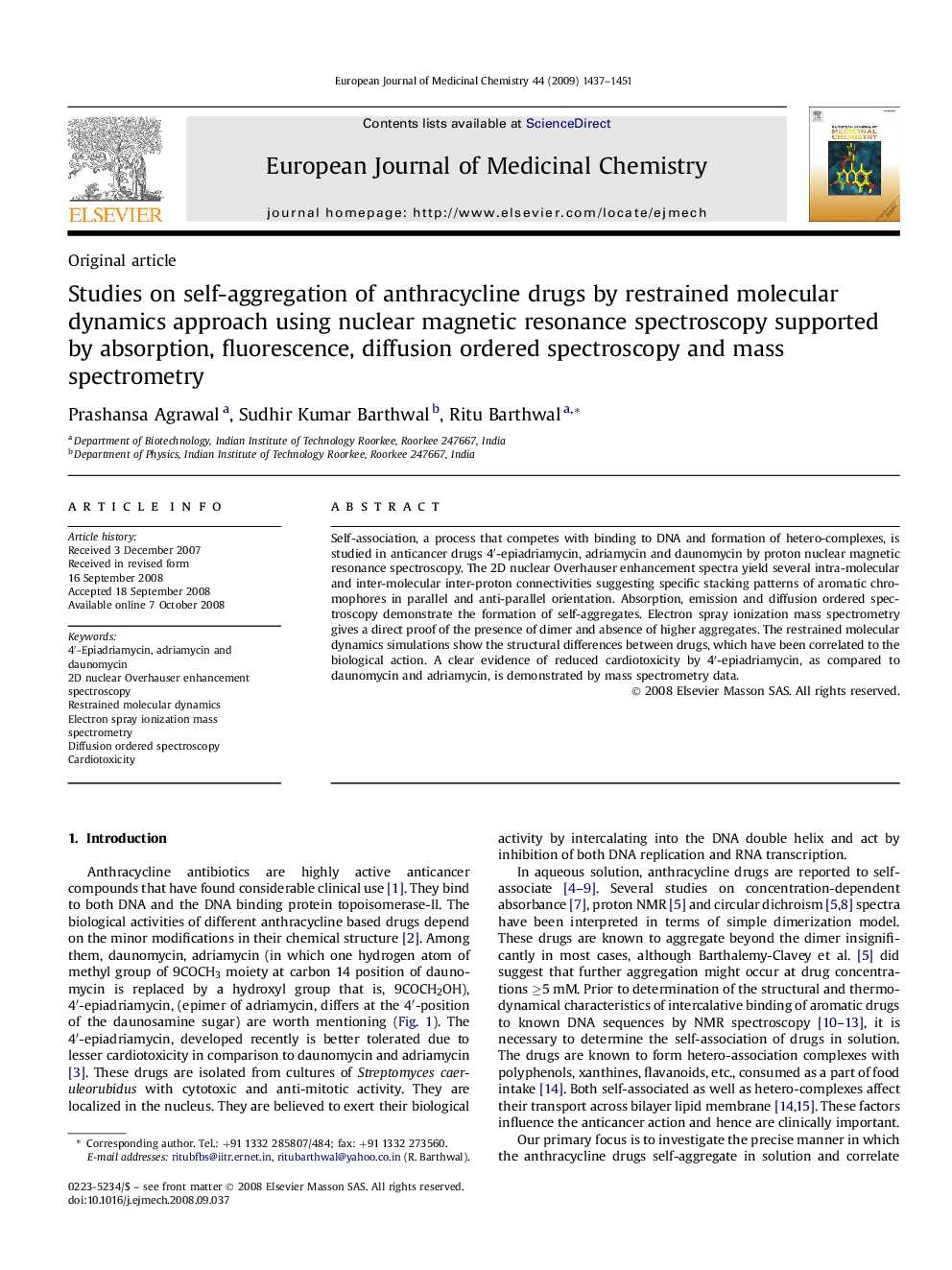| Article ID | Journal | Published Year | Pages | File Type |
|---|---|---|---|---|
| 1395170 | European Journal of Medicinal Chemistry | 2009 | 15 Pages |
Self-association, a process that competes with binding to DNA and formation of hetero-complexes, is studied in anticancer drugs 4′-epiadriamycin, adriamycin and daunomycin by proton nuclear magnetic resonance spectroscopy. The 2D nuclear Overhauser enhancement spectra yield several intra-molecular and inter-molecular inter-proton connectivities suggesting specific stacking patterns of aromatic chromophores in parallel and anti-parallel orientation. Absorption, emission and diffusion ordered spectroscopy demonstrate the formation of self-aggregates. Electron spray ionization mass spectrometry gives a direct proof of the presence of dimer and absence of higher aggregates. The restrained molecular dynamics simulations show the structural differences between drugs, which have been correlated to the biological action. A clear evidence of reduced cardiotoxicity by 4′-epiadriamycin, as compared to daunomycin and adriamycin, is demonstrated by mass spectrometry data.
Graphical abstractStacked structure of adriamycin dimer obtained by restrained molecular dynamics simulations using NOE distance restraints along with mass spectrum showing glycosidic bond cleavage responsible for cardiotoxicity.Figure optionsDownload full-size imageDownload as PowerPoint slide
